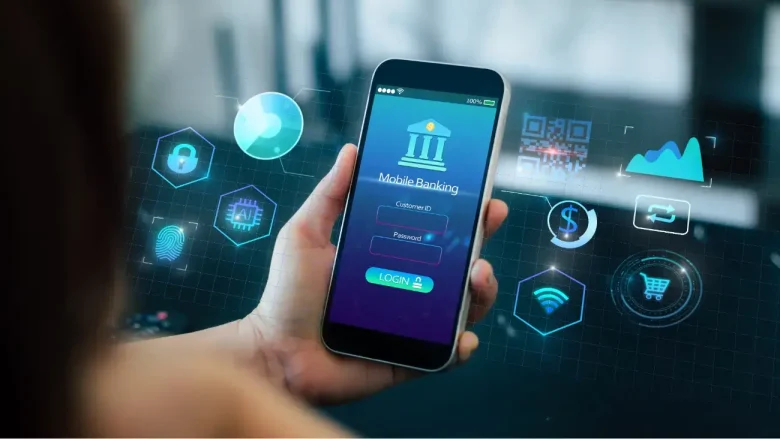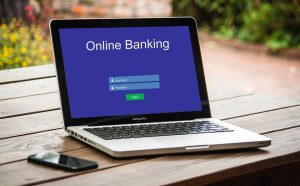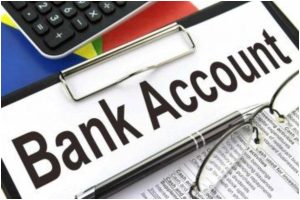Banks provide their customers with mobile banking apps, which are digital tools that enable them to access and manage their accounts directly from their phones. Users simply download their bank’s mobile app and can conduct most banking transactions on the go, without having to visit a branch or connect to a computer. These apps are designed to make banking quick and easy for anyone with a smartphone. People can check their balances, transfer money, pay bills, and even deposit checks through mobile banking apps, all without having to go to the bank.
Why People Love Mobile Banking Apps
Mobile banking apps are becoming increasingly popular because they perfectly fit into today’s lifestyles. People want simple and fast ways to manage their finances, and mobile apps are the perfect way to achieve this. With an internet connection, you can check your accounts and make transactions anytime, anywhere. Mobile apps save time, reduce paperwork, and make managing your money easier. Millions of people around the world, from students to entrepreneurs, use them daily.
How to Use Mobile Banking Apps
Mobile banking apps provide secure access to your bank accounts via your phone. You can log in with your username and password or use other security features, such as fingerprint or facial recognition. The app then displays your account information, transaction history, and banking services. Because all personal and financial information is encrypted, it is highly secure. Banks regularly update their apps to ensure optimal performance and better protection against risks.
Key Features of Mobile Banking Apps
Mobile banking apps offer many useful features. They allow users to view account balances and transaction history and transfer money between accounts. Many apps also allow you to pay bills, deposit checks, and set up automatic transfers on your phone. Some apps go even further, offering tools to manage your budget, monitor your spending, and receive notifications if there are any discrepancies. These features are designed to give customers complete control over their money and make banking faster and easier.
Advantages of Mobile Banking Apps
A major advantage of mobile banking apps is their ease of use. You can bank anytime, anywhere, without having to wait in line. Another benefit is the ability to complete tasks that once took hours in just a few minutes. Users can track their spending in real time with mobile apps, which simplifies budget management. With mobile banking apps, you can manage your accounts anytime, anywhere, which is very convenient for frequent travelers.
Security Features of Mobile Banking Apps
Banks take security very seriously, and mobile banking apps have robust security features. Most apps require you to enter a password, PIN, or biometric identification (such as a fingerprint or facial scan) to use them. They also encrypt data as it travels over the internet to ensure its security. Many banks closely monitor unusual account activity and send notifications when something unusual occurs. These security measures make mobile banking apps one of the safest ways to manage your finances online.
How to Use Mobile Banking Apps Safely
Even with robust security systems, customers should exercise caution when using mobile banking apps. It’s crucial to use a strong, hard-to-guess password and never share your login credentials with others. To avoid fraudulent versions, download apps only from official app stores. Another important measure is using secure Wi-Fi networks and avoiding public hotspots while banking. Regularly updating your app ensures you have the latest security updates. Mobile banking is very safe thanks to secure procedures and strong banking security.
Common Risks of Using Mobile Banking Apps
Like any other online service, mobile banking apps carry inherent risks. Phishing, scams, and unsecured networks are among the most dangerous. Hackers can send fake emails or text messages to trick users into providing account information. Some people accidentally download fake apps that look authentic. Banking on public Wi-Fi networks can also be potentially dangerous. By understanding these threats and taking simple steps to protect your account, you can keep it secure.
Why You Need a Mobile Banking App Now
Mobile banking apps are no longer just a perk; they’ve become a necessity in everyday life. Employers can deposit salaries instantly, while apps allow people to pay bills right away. People no longer need to go to the bank for simple transactions, saving time and effort. In emergencies, mobile apps make it easy to quickly transfer money to friends and family. For many, mobile banking is more than just a convenient tool; it’s a necessity.
The Future of Mobile Banking Apps
With continued technological advancements, the future of mobile banking looks even brighter. Banks are adding new services, including AI-powered financial advice, instant payment mechanisms, and enhanced biometric security. Some apps are beginning to integrate with digital wallets and other financial services, allowing you to manage all your money in one place. As these apps continue to develop, they will play an increasingly important role in your daily financial management.
Conclusion
Mobile banking apps have changed the way people manage their money. They make managing your money easier than ever by providing convenient, secure, and simple access. Mobile banking apps have become an integral part of modern life, allowing you to transfer money, pay bills, and view your account information in real time. While there are some risks, good security habits can help keep your account safe. The growing popularity of mobile banking apps demonstrates how technology is making everyday tasks easier and banking faster, smarter, and more secure.
FAQs
1. What is a mobile banking app?
Banks offer mobile banking apps for smartphones, allowing consumers to access and manage their accounts online.
2. Are mobile banking apps safe to use?
Yes, mobile banking apps are safe because they have strong security features like encryption, passwords, and biometric login. However, customers should still exercise caution.
3. What can I do with a mobile banking app?
With a mobile banking app, you can check your account balance, transfer money, pay bills, deposit checks, and even set up automatic payments.
4. Can I use mobile banking without an internet connection?
No, mobile banking apps require an internet connection, but some banks allow you to conduct certain banking transactions via text message without using the app.
5. What should I do if I can’t find the phone on which my mobile banking app is installed?
Please reach out to your bank promptly to disable access and update your login information. Many banks also allow you to disable the app remotely.




